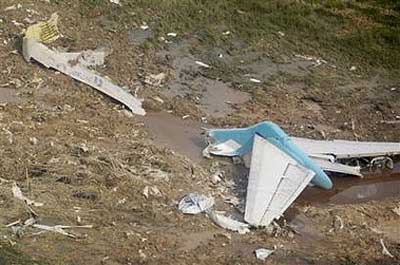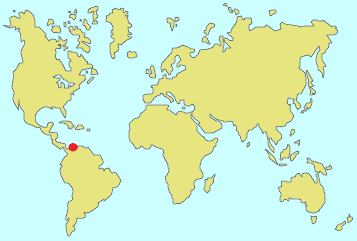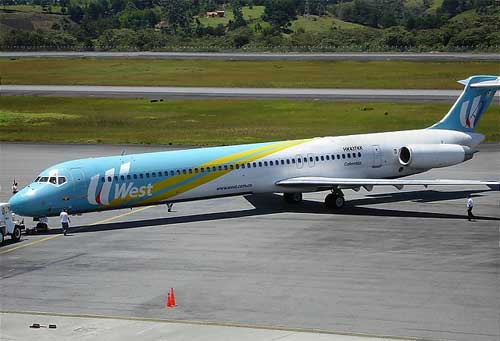West Caribbean Airways MD-82 plane crash
Machiques, Venezuela

Updated on
 The aircraft was on a passenger flight from Panama City, Panama to Fort de France on the Caribbean Island of Martinique.
The crew announced intentions to divert to Caracas. Then the aircraft began a rapid descent, and crashed into mountainous
terrain some 20 miles from the Colombian border with Venezuela.
The aircraft was on a passenger flight from Panama City, Panama to Fort de France on the Caribbean Island of Martinique.
The crew announced intentions to divert to Caracas. Then the aircraft began a rapid descent, and crashed into mountainous
terrain some 20 miles from the Colombian border with Venezuela.
According to the DFDR (Digital Flight Data Recorder) and CVR (Cockpit Voice recorder), the aircraft would have descended
nose up. The crew was talking about weather conditions, and evocated possible icing conditions. The crew also thought about
enabling wings and engines anti-ice devices. Analysis of the debris showed that both engines exhibited indications of
high-speed compressor rotation at the time of impact, which enabled investigators to conclude that the engines were not
previously damaged.
The investigation shows that the cause of the crash is a combination of several human errors and bad weather conditions.
- The aircraft was overloaded by 6000 lb (about 2,5 tons), and weighted 155 000 lb at the beginning of cruise. Moreover,
the weight was inadequately balanced. Therefore, the plane was more difficult to fly.
- Then, during cruise, the aircraft entered into a thunderstorm, with severe icing conditions. The engines iced, leading
to a loss of thrust. Build-up of ice on wings may have also happened, which would have resulted in a decrease of the aircraft
performance. The first officer immediately requested to engage the de-icing, but the captain did not take his request into
account. Note that the first officer was inexperienced compare to the captain.
- Finally, the aircraft began to loose altitude. The crew then made a real mistake when they decided to switch off the auto-pilot. Indeed, the autopilot features a pitch correction function, which helps to fly the plane in this situation. Just after the auto-pilot disconnection, the MD82 stalled. It crashed 50 seconds later.
Details about aircraft icing
This kind of severe icing can occur when aircraft fly into particular weather conditions (for example, in a cloud of supercooled water droplets).- Ice accretion on the wing leading edge may occur. Airflow disruption will reduce
the maximum lift coefficient attainable by as much as 30% – 50%, thus raising the stalling speed considerably.
And because the aircraft has to fly at a greater angle of attack to maintain lift, the induced drag also increases and
the aircraft continues to loose airspeed, making it impossible to sustain altitude if the stall is to be avoided. The weight
of the ice is also particularly constraining.
- Air data probes may also iced, which leads to misleading airspeed indications.
- Finally, the engine air intake may also be impacted by icing, leading to a loss of power and a possible engine overheating.
In 1994, an ATR72 crashed near Chicago. Holding in ice for over an hour, the ice built up to the point that the aircraft became completely uncontrollable and spiralled to the ground.
This accident is the 16th worst plane crash since year 2000 in terms of the number of combined onboard and ground fatalities. Watch here the list of the worst aircraft crashes since year 2000.



